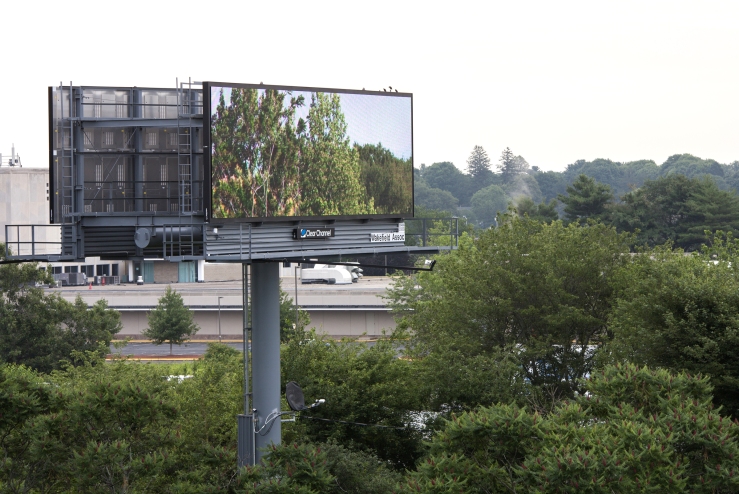Belgrade 2012
25th of May / 05th of October / 07th of December
25th of May 2012 Biopolitics Today
Roberto Esposito, Professor of Theoretical Philosophy, Istituto Scienze Umane, Naples, Italy. For five years he was the only Italian member of the International Council of Scholars of the Collège International de Philosophie in Paris. He was one of the founders of the European Political Lexicon Research Centre and the International Centre for a European Legal and Political Lexicon. Today is one of the world leading philosophers working on biopolitics. He is best known as the author of his books: Communitas (1998), Bios. Biopolitica e filosofia(2004) and Termini della politica. Comunità, immunità, biopolitica (2008).
Matteo Pasquinelli, Writer and academic researcher, member of the international collectives Uninomade and Edufactory. He wrote the book Animal Spirits: A Bestiary of the Commons (2008) and edited the collections Media Activism (2002) and C’Lick Me: A Netporn Studies Reader (2007). He writes and lectures frequently at the intersection of French philosophy, media culture and Italian post-operaismo. His current project is a book about the history of the notion of surplus across biology, psychoanalysis, knowledge economy and the environmental discourse. He lives and works betweem Amsterdam and Berlin.
Lorenzo Chiesa, Philosopher, Reader in Modern European Thought, The School of European Culture and Languages, University of Kent, UK. His research interests are in the area of contemporary French thought, contemporary Italian thought and culture, Freudian and Lacanian psychoanalysis and Marxist theory. He is member of the editorial board of Journal of European Psychoanalysis and member of Association Franco-Italienne pour la recherche sur la Philosophie Française Contemporaine. As well he is member of the editorial board of the journal S and member of the Circle for Lacanian Ideology Critique. He is the author of two books: Antonin Artaud. Verso un corpo senza organi (2001) and Subjectivity and Otherness. A Philosophical Reading of Lacan (2007). Chiesa recently completed the translation of Agamben’s Il Regno e La Gloria: Homo Sacer, II, 2 for Stanford University Press as well as a special issue of Angelaki: Journal of the Theoretical Humanities on the notions of bio-economy and human nature in contemporary Italian radical thought. Now he is finishing two books – For Lacan: Science, Logic, Politics (2012) and The Virtual Point of Freedom (2012) – and a special issue of Journal of European Psychoanalysis on recent philosophical approaches to Lacan. He co-edited The Italian Difference: Between Nihilism and Biopolitics (2009).
Maurizio Lazzarato, Internationally known Paris based philosopher and sociologist, co-founder and a member of the editorial board of Multitudes, specialized in studies of relationships of work, economy and society, expert on Gabriel Tarde, works at the University of Paris I. Lazzarato has been specializing in the analysis of cognitive capitalism, and its discontents, hence his work on the P2P-concept of Multitudes, the coordination format in political and economic resistance. His political analysis has been a vital part of the effort of the group of autonomist marxists who have paid sustained attention to the role of language and communication in contemporary biopolitical configurations of capital. He has written several research papers and monographs: Lavoro Immateriale: Forme di Vita e Produzione di Soggettività (1997),Videofilosofia. Percezione e lavoro nel postfordismo (1997), Tute Bianchi. Disoccupazione di di Massa et reddito cittadinanza (1999), Post-face à Monadologie et sociologie (1999), Puissance de l’invention. La Psychologie Economique de l’Gabriel Tarde contre economie politique (2002) and Les Revolutions de capitalisme (2004), Etude statistique, économique et sociologique du régime d’assurance chômage des professionnels du spectacle vivant, du cinéma et de l’audiovisuel (2005).
05th of October 2012 Bioethics: Science, Biopower and Life
Thomas Lemke, Heisenberg Professor of Sociology with Focus on Biotechnology, Nature and Society at the Faculty of Social Sciences of the Goethe University Frankfurt/Main, Germany. He is partner in the PRIVILEGED project – »Determining the Ethical and Legal Interests in Privacy and Data Protection for Research Involving the Use of Genetic Databases and Bio-banks«, funded by the European Commission. He is member of the editorial board of the journal Foucault Studies, co-editor of Distinktion. Scandinavian Journal of Social Theory, and member of the International Sociological Association (ISA), the Research Committees »Sociological Theory« and »Sociology of Science and Technology« and the Working Group »The Body in the Social Sciences«. In 2011 Thomas Lemke published two books – Biopolitics. An Advanced Introduction appeared at New York University Press, Foucault, Governmentality, and Critiqueappeared at Paradigm Publishers, and republished new edition of his famous book Critique of political reason. Foucault’s critique of modern governmentality (Argument Verlag, 5th edition).
Joanna Zylinska, Cultural theorist writing on new technologies and new media, ethics and art, Reader in New Media and Communications at Goldsmiths, University of London, UK. She is the author of three books – Bioethics in the Age of New Media (MIT Press, 2009), The Ethics of Cultural Studies (Continuum, 2005) and On Spiders, Cyborgs and Being Scared: the Feminine and the Sublime (Manchester University Press, 2001) – she is also the editor of The Cyborg Experiments: the Extensions of the Body in the Media Age, a collection of essays on the work of performance artists Stelarc and Orlan (Continuum, 2002) and co-editor of Imaginary Neighbors: Mediating Polish-Jewish Relations after the Holocaust (University of Nebraska Press, 2007). Zylinska has a new book on the idea of mediation, Life after New Media (with Sarah Kember) forthcoming from the MIT Press. Together with Clare Birchall, Gary Hall and Open Humanities Press, she’s just launched the JISC-funded project Living Books about Life.
Steve Fuller, Philosopher/sociologist in the field of science and technology studies, Professor of Sociology at Warwick University, holds the Auguste Comte Chair in Social Epistemology, fellow of the UK Academy of Social Sciences, known for inciting passions and controversial debates over ethical questions. His major areas of research are the future of the University and critical intellectuals, the emergence of intellectual property in the information society, the interdisciplinary challenges in the natural and social sciences, the political and epistemological consequences of the new biology. His major publications are: Social Epistemology (1988),Philosophy of Science and its Discontents (2nd edn.)(1993), Philosophy, Rhetoric and the End of Knowledge (2nd edn) (2003), Science (1997), The Governance of Science: Ideology and the Future of the Open Society (2000), Thomas Kuhn: A Philosophical History of Our Times (2000),Knowledge Management Foundations (2002) and Kuhn vs Popper: The Struggle for the Soul of Science (2003), New Frontiers in Science and Technology Studies (2007), Science vs. Religion? Intelligent Design and the Problem of Evolution, and Science (The Art of Living Series, 2010). He is most closely associated with the issues relating to recent developments on the impact of science and technology on the political order, especially concerning our changing conceptions of the biological and what it means to be human.
07th of December 2012 Radical Bioart Practices
Stephen Zepke, Philosopher and independent researcher, teaches Philosophy at the University of Vienna, Austria. He has published numerous essays on philosophy, art and cinema. He is the author of Art as Abstract Machine: Ontology and Aesthetics in Deleuze and Guattari(Routledge, 2005) and the co-editor of two books: Deleuze, Guattari and the Production of New(Continuum, 2008) and Deleuze and Contemporary Art (Edinburgh University Press, 2010). His research interests are: contemporary aesthetics and (bio)political theory.
Jens Hauser, Art curator, writer and video/film maker, Research Associate at the Institute for Media Studies at Ruhr University Bochum, Germany. He has organised a large show on biotechnological art at the National Arts and Culture Centre Le Lieu Unique Nantes/France, including eleven artists employing biotechnology as a means of expression, and published L’Art Biotech’ (2003). His forthcoming exhibitions and festival programs deal with the paradigm of skin as a technological interface, and with perceptional aspects of technology related art forms in general. He is also regularly contributing to the european cultural channel ARTE since 1992, and is currently involved in two long-term film projects about bioart.
Memefest, International festival of radical communication, Based in Slovenia, but united across five continents by our dedication to spreading alternative theory and praxis, is an international network of communication experts, media activists, academics, professionals, educators and researchers interested in social change trough sophisticated and radical use of media and communication. As a “festival of radical communication”, Memefest nurtures and rewards innovative and socially responsible approaches to communication. The festival is encouraging students, professionals, artists, researchers, educators, activists and anyone interested in socially beneficial communication to contribute their talents to our collective counter-culture. Memefest is completely independent. It operates as a intermediary non formal institution and connects very different spheres as academia, creative professionals, artists and activists from around the globe.
lifeartbiopolitics.org/


















